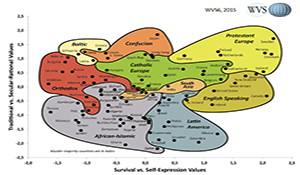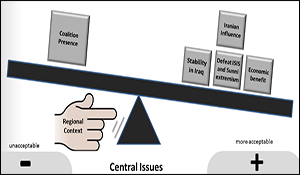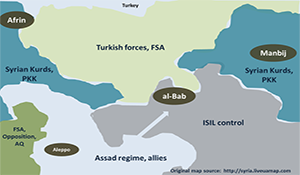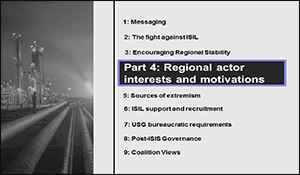US and Russia Interests in Middle East
Question (R4.7): What are the respective national interests of the US and Russia in the Middle East, and what are the options for alleviating US/Russian tensions to mutual satisfaction and improved regional stability? Author | Editor: Polansky (Pagano), S. (NSI, Inc.). Executive Summary The geopolitical foundation of the Middle East is undergoing a fundamental shift […]
Continue ReadingUS Foreign Policy as a Global Power
Question (R4.5): Does US foreign policy strike the right balance in supporting US interests and its role as a global power? Or, should the US consider a more isolationist approach to foreign policy? What impact could an isolationist policy have on Middle East security and stability, balance of influence by regional and world actors, and […]
Continue Reading
Role of Human Geography, Culture and Language
The Key Role of Human Geography, Culture and Language in Effective Communication. Author | Editor: Sutherlin, G. (Geographic Services, Inc.). Overview To begin with a truism, people in different places speak different languages; they belong to different cultures. This is not in dispute, but it remains a persistent operational challenge. Understanding other cultures well enough […]
Continue Reading
Discussion with NPS Experts – May 2017
SMA Reachback Panel Discussion with Experts from Naval Postgraduate School – May 2017. Author | Editor: Nicole (Peterson) Omundson (NSI, Inc). On 11 May 2017, NPS convened a panel session and discuss areas related to the 4th round of CENTCOM Reach Back Cell Questions. The speakers are listed below, and their biographies are available in […]
Continue Reading
Highlights From Round 1, 2, 3 Questions
SMA Reachback: Highlights From CENTCOM Round 1, 2 and 3 Questions. Author | Editor: Astorino-Courtois, A. (NSI, Inc). Overview ISIS will be defeated militarily. However, whether it is ultimately overcome by containment or by deploying ground forces to apply overwhelming force, the path to mitigating violent extremism in the region is a generations-long one. Military […]
Continue ReadingMeaning of ISIS Defeat & Shaping Stability
The Meaning of ISIS Defeat and Shaping Stability — Highlights from CENTCOM Round 1, 2 and 3 Reach-back Reports. Author | Editor: Astorino-Courtois, A. (NSI, Inc). Conclusion ISIS will be defeated militarily. However, whether it is ultimately overcome by containment or by deploying ground forces to apply overwhelming force, the path to mitigating violent extremism […]
Continue ReadingImpact of the Presence of ISIS in Africa
Question (AR1.Q1): How will the future of ISIS in Syria and Iraq impact the presence of ISIS in Africa? Author | Editor: Polansky (Pagano), S. (NSI, Inc). While the consideration of ISIS’s fate in Syria and Iraq of course adds significant value to the question of ISIS in Africa, ISIS’s next steps there appear to […]
Continue Reading
Part 10 Supplemental Transcripts From NPS Event
SMA CENTCOM Reach-back Reports – Part 10: Supplemental Transcripts. Author | Editor: SMA Program Office. The enclosed reports discuss wide-ranging issues related to the defeat if ISIL and stabilization of Syria and Iraq supplementary to the 9-part series of SMA Reach back responses to questions posed by USCENTCOM grouped by theme. Series reports may be […]
Continue Reading
Turkish Interests in Syria and Iraq
Question (R2 QL6): What are near and long term Turkish interests and intentions in Syria and Iraq? What are Turkish interests and intentions with respect to al-Bab? Author | Editor: Astorino-Courtois, A. (NSI, Inc). Despite policy shifts Turkey’s key interests remain the same The SME contributors to this SMA Reach-back write-up argue that the recent […]
Continue Reading
Part 4 Actor Interests and Motivations
SMA CENTCOM Reach-back Reports – Part 4: Regional Actor Interests and Motivations. Author | Editor: SMA Program Office. This is Part 4 of a 9 part series of SMA Reach back responses to questions posed by USCENTCOM. Each report contains responses to multiple questions grouped by theme. At the request of United States Central Command […]
Continue Reading